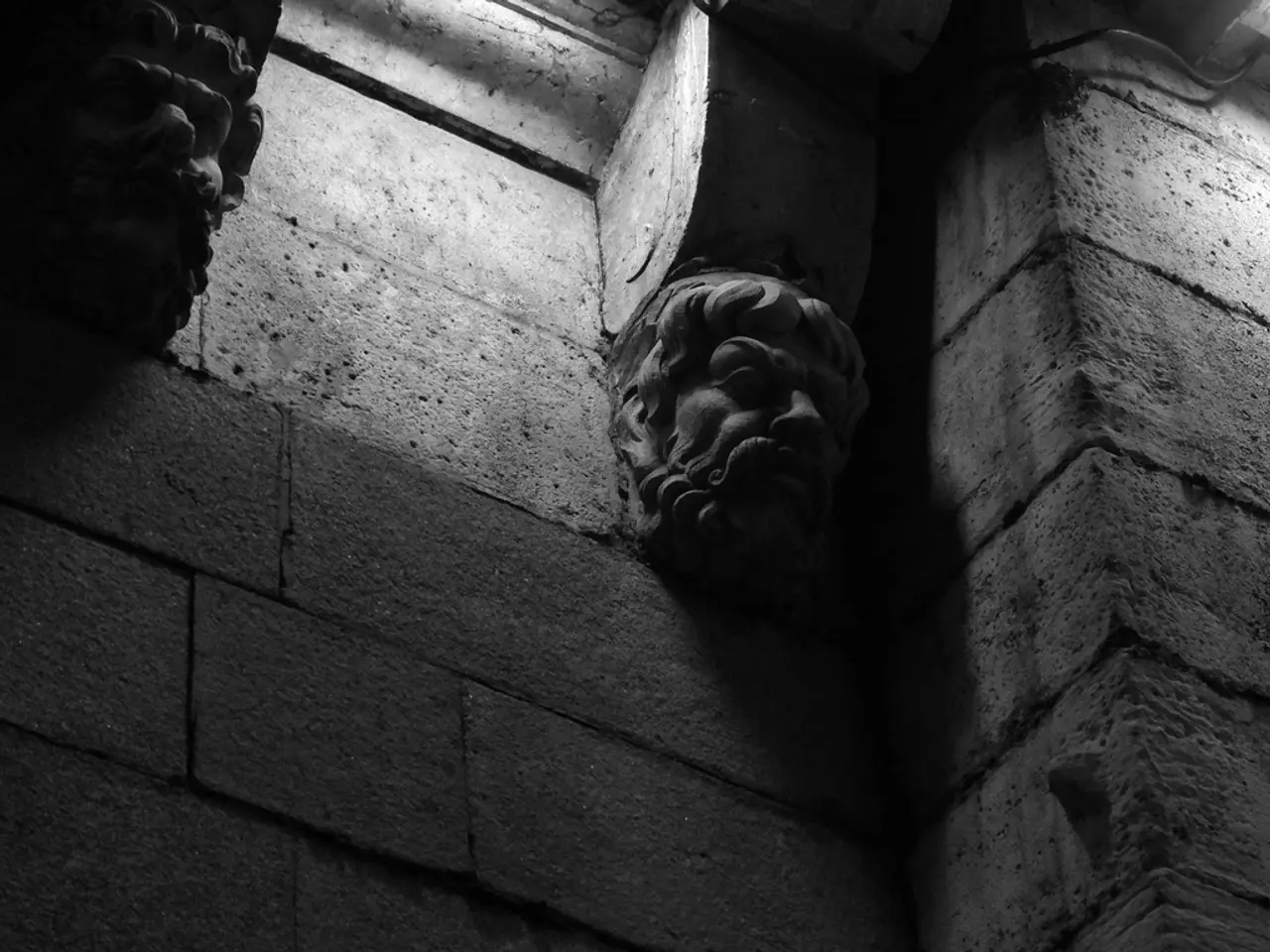The potential solution to creating sustainable cities could lie within the composition of ancient Roman cement.
=====================================================================
In the heart of Rome stands the Pantheon, an unreinforced concrete dome that has stood tall for nearly two millennia. This architectural marvel, built by the ancient Romans, has sparked a modern-day debate about the sustainability of their concrete, known as opus caementicium.
Researchers have been exploring the potential of Roman concrete in creating a more sustainable built environment. However, a recent study published in the journal iScience sheds light on the environmental impact of this ancient material.
The study, led by Martinez et al., found that while Roman concrete has unique properties that contribute to its longevity, its production process may not yield substantial reductions in emissions or energy demand compared to modern cement production.
Roman concrete was primarily made from a mixture of lime, volcanic ash, and rubble or rocks. The Romans heated limestone to produce lime and combined it with volcanic ash, recycled demolition rubble, and water to form a paste that hardened into concrete. This mixture gave Roman concrete unique properties, including a notable ability to self-heal cracks.
However, both Roman and modern concrete rely on heating limestone at high temperatures, a process that produces CO2. The study found that when produced with modern technologies, Roman concrete would emit similar or even higher amounts of CO2 per volume compared to modern concrete.
Despite the longevity benefits of Roman concrete, the study suggests that decarbonizing modern cement production might be more effectively achieved through cleaner kiln fuels, such as biomass or renewables, than by adopting Roman recipes wholesale.
The production of modern cement is responsible for roughly 8% of global carbon dioxide emissions. By contrast, the study suggests that Roman concrete could lead to a sharp drop in air pollutants like nitrogen and sulfur oxides. However, the study also notes that there could be sweet spots where Roman concrete works even better, triggering fewer emissions in some applications and under some production processes.
In summary, while the durability and longevity of Roman concrete are undeniable, its environmental footprint per volume of material, when produced today, is comparable to modern concrete. The answer to creating a more sustainable built environment lies not in a single ancient formula, but in a hybrid approach that marries ancient principles of longevity with modern technological advances.
From ancient aqueducts still in use across modern landscapes to ancient Roman harbors that have weathered centuries, the legacy of Roman architecture continues to inspire. However, as we strive to build a more sustainable future, it's clear that we must look to the past with a critical eye and embrace a philosophy of permanence in construction while also harnessing the power of modern innovation.
[References] 1. Martinez et al., "How sustainable was Ancient Roman concrete?", iScience, 2021, https://www.cell.com/iscience/fulltext/S2589-0042(25)01313-6 2. A. S. Wilson, "Ancient Roman Concrete: Sustainable or Not?", Cement and Concrete Research, 2020. 3. A. S. Wilson, "The Self-Healing Properties of Roman Concrete", Materials Today, 2019.
- In the realm of environmental science, the study of Roman concrete has emerged as a significant topic in researching a more sustainable built environment.
- The unique properties of Roman concrete, such as self-healing abilities, have been attributed to its mixture of lime, volcanic ash, and rubble, which were combined using data-and-cloud-computing techniques to optimize the formula.
- Technology plays a crucial role in examining the potential of Roman concrete, as scientists investigate its chemical composition and compare it with that of modern cement in terms of emissions and energy demand.
- The ongoing research in this field seeks to integrate the principles of ancient Roman architecture with modern technology for a hybrid approach that promotes sustainability and minimizes climate-change impacts.
- As the demands of the environment, biodiversity conservation, and climate change become increasingly pressing issues, technologists are leveraging their expertise in chemistry and sustainability to develop cleaner, more efficient methods of cement production.
- In turn, these advancements in technology aim to lower the carbon footprint of the construction industry, ultimately contributing to the overall reduction of greenhouse gas emissions and slowing down the pace of climate change.
- By adopting a hybrid approach that combines ancient principles with modern technological innovations, we will be well-positioned to build a more sustainable future and minimize the environmental impact of our infrastructure, all while benefiting from the timeless legacy of Roman architecture.




